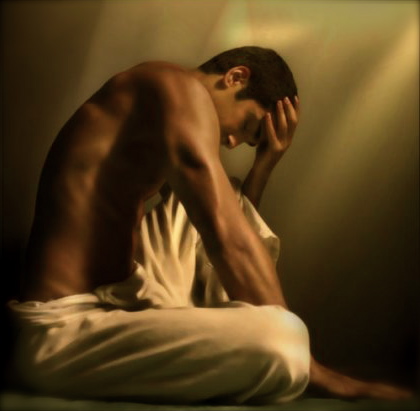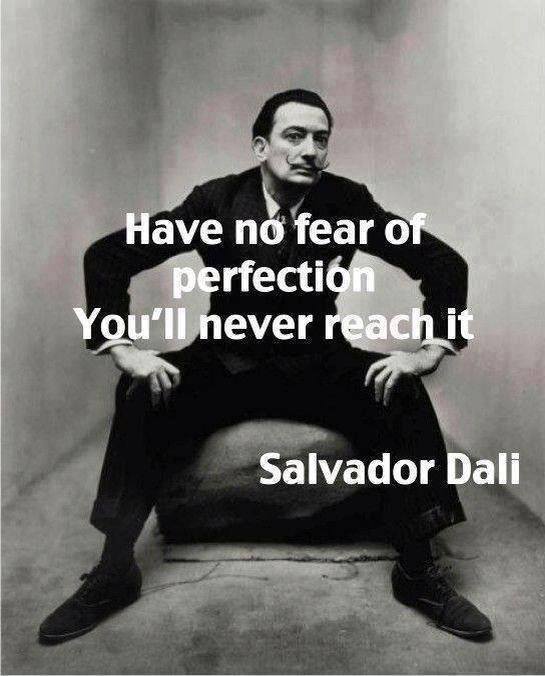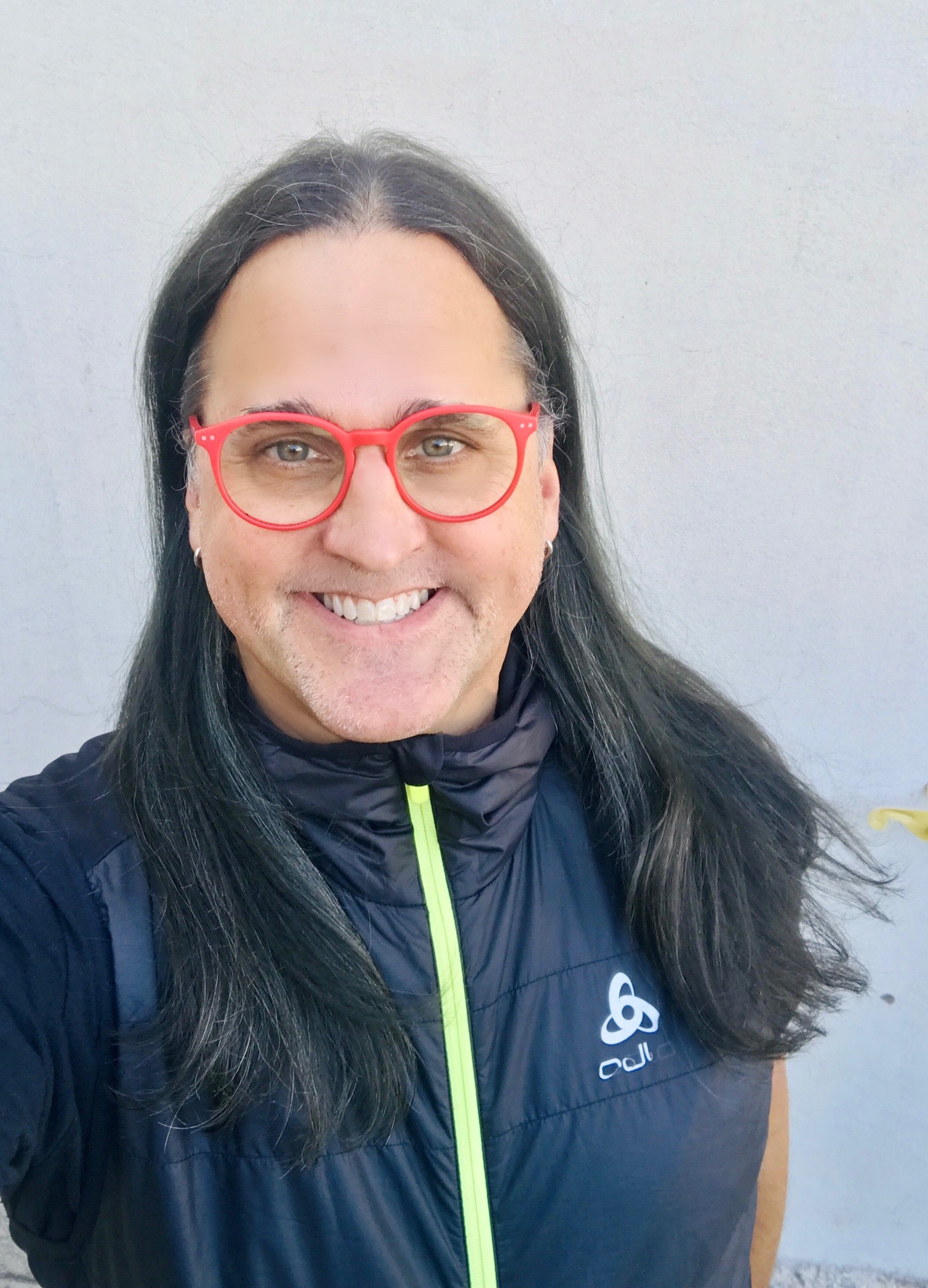Teaching Yoga To Perfectionists ~ Chris Kiran Aarya
 “At its root, perfectionism isn’t really about a deep love of being meticulous. It’s about fear. Fear of making a mistake. Fear of disappointing others. Fear of failure. Fear of success.” ~Michael Law
“At its root, perfectionism isn’t really about a deep love of being meticulous. It’s about fear. Fear of making a mistake. Fear of disappointing others. Fear of failure. Fear of success.” ~Michael Law
To all appearances, a perfectionist looks, well, perfect. They rule their world, from their career to their dishwasher, there is a right and a wrong way to get everything done. They are aware and in control of their environment. But, what have they sacrificed for this control? For this perfection?
Have they chosen perfection over happiness?
Perfection and The Enneagram
A few years ago I was lucky enough to hang out with Dr. Melanie Joy who is best known as the author of the book Why We Love Dogs, Eat Pigs, and Wear Cows. She is also a Harvard-educated psychologist, professor of psychology and sociology at the University of Massachusetts Boston who introduced me to the Enneagram.
Immediately after being introduced to the Enneagram, I knew it was something I wanted to learn more about not only to bring into my yoga teaching, but in order to learn more about the people around me and what makes them do what they do. As Melanie pointed out to me, learning the Enneagram allows us to have more compassion for other people, especially those who are difficult to get along with.
What I found when incorporating the Enneagram into my yoga teaching was in noticing the types who were coming to my classes and learning what they needed in order to feel safe and have the transformative experience they are looking for. Realizing that a certain Enneagram type may be frustrated or struggling, it was easier to find the right words to help them feel calm and centered again – often with immediate effect. The Enneagram was rich in its descriptions of each type including what a healthy and unhealthy version of each one looked like, and best of all, what kind of personal and spiritual “homework” each needs to do to stay on a healthy path.
For those not familiar with it, the Enneagram is a study of nine basic personality types. It explains why we behave the way we do and what kind of work we need for personal growth. According to the Enneagram, in early childhood we each learned how to feel safe and loved in our family situation by developing a coping strategy that worked best for us. And since these coping strategies work for us, we carry them forth into our adult life, affecting the way we see ourselves in interpersonal situations, how we see the world, and what motivates us.
Each of these coping strategies fall into nine main categories and each with a corresponding number:
1 – The Perfectionist
2 – The Helper
3 – The Achiever
4 – The Romantic
5 – The Observer
6 – The Questioner
7 – The Adventurer
8 – The Asserter
9 – The Peacemaker
Of all the types I saw coming to yoga, the type that seemed the most challenged by it was also the one that seemed to benefit the most; Type Ones also known as Perfectionists.
The Perfectionist.
Perfectionists at their best are principled, mission driven, and conscientious. In fact, we need such people in our society to make things function in a fair and just manner. Type One Perfectionists are the ultimate idealists and throughout history, healthy Ones like Raoul Wallenberg, Mahatma Gandhi, and Joan of Arc have inspired millions.
But at their worst, perfectionists can be overly critical, controlling, and seen as know-it-alls. Worst of all for them is that their inner critic can be absolutely brutal, making it very difficult to let themselves be a beginner at anything and go through the learning process like everyone else. No other type spends so much time comparing themselves to others and no matter how well they are doing, if they’re not doing something “perfectly” they feel like a failure. Even then, the inner critic never seems satisfied.
The Perfectionists learned at an early age that if they play by the rules and “do things right”, they’ll be safest, receive more love, and get what they want. So their life is spent pursuing perfection in all things including the world around them. Thus, they often feel self appointed to responsibility much to the chagrin of those around them who feel that the perfectionist is constantly being bossy.
Meanwhile, the Perfectionist thinks they are coming from a place of love and trying to show someone the “right way” to do something – while not seeming to realize that there can be many “right ways” to do it.
They can often be heard saying that if they can’t pick up and learn something fast and be good at it, they don’t want to do it. This is based on a deeply rooted feeling that if they’re not doing something perfectly, not only is their ego crushed, but they’ll feel unsafe and unworthy of love.
So, they grow up wanting to learn the rules in every situation. They are the ones reading and making sure everyone understands the instructions on the inside of the game box. In couples therapy they’ll try to quickly learn the rules so they can “win” by being the perfect client. The ongoing theme of the Perfectionist is “There’s a right way to do that, let me show you how it’s done.”
They are champions of justice and fair play but they often feel angry at most of what is happening in their world because it is “wrong.” Their anger is expressed as righteous indignation and their ego’s belief that it knows what is best for itself and others.
In the process, they see themselves as rational, that they know what is right, but they overuse their rational mind and don’t acknowledge and express their intuition. They ignore their emotions, and abandon their spiritual selves.
If they end up rejecting these needs, it leaves them unhappy and resentful. They have “played by the rules” but have not been rewarded with love and close personal relationships. No one should need to live this way.
“You can’t think yourself out of a prison made of thoughts” ~ Krishna Das
And what causes them stress? The need to control themselves and everything around them so its perfect – and becoming overwhelmed in the attempt. They can end up fatigued by the high standards they set for themselves and others.
Perfectionists are often the students in yoga class who are looking around at the others. Their inner critic demands comparison, so their ego needs to collect evidence to bring them before the judge for sentencing.
They are often the ones who practice at home with a DVD for years before going to a yoga class because they are afraid of being seen not doing it perfectly.
They are the ones who beat themselves up and look defeated when they can’t yet do a challenging pose while the others are laughing as they flail and fall and fail and try again.
And most of all, they have a difficult time in meditation and relaxation because that is when their inner judge pounds the gavel to bring the court to order to put them on trial for everything they didn’t do perfectly that day.
Many people who are not perfectionists, especially women, can feel these same things based on societal pressure to reach an ideal of beauty, perfect motherhood, or career accomplishment.
Yoga And Perfectionists.
Just as they do in their lives, your perfectionist students will want to learn the “rules” and try to be a “good student.” And given the frayed state of yoga etiquette these days, this can be a real breath of fresh air.
Perfectionists also tend to gravitate to styles of yoga which emphasize alignment since it represents a clear set of “rules” to follow and they may shy away from classes emphasizing, breath techniques, meditation, or spiritual transformation since they are not rule based and seem harder to become “good” at.
The language we use when teaching yoga can mean something completely different to a perfectionist. To many of them, surrender equals failure and the word transformation is either frightening or laughable since their rational mind can’t make sense of it.
I was accustomed to having a few perfectionists in each class but it was not until I moved to Germany that I encountered situations where half of the class, if not the majority of the students, were all perfectionists.
German culture places a high value on perfectionism and following the rules. It is the reason why Germans make such high quality products and their crime rate is so low – standards really mean something here.
But these standards have an emotional price as well since perfectionism is closely tied to anxiety and depression since people are reaching for a standard which is impossible to achieve. And while there are practices which can help reduce or remove the physical manifestations of anxiety and depression in the body, if we don’t deal with the root cause of them, in this case perfectionism, the effects will continue to return.
If anyone needs yoga, it’s a perfectionist.
Of course, I ended up moving to Stuttgart, the most perfectionist city in Germany. It’s the home of Porsche, Mercedes, Smart Car, Bosch and other companies turning out some of the finest technical products in the world. People here are hard working, intelligent, conscientious, and always trying to do things “the right way.” It is here in Stuttgart that I learned even more about the toll perfectionism takes on people as I learned more about how to teach yoga to perfectionists.
Teaching Yoga to Perfectionists.
“Its not the size of the load that breaks your back, its how you carry it.” ~ Lou Holtz
When teaching yoga to perfectionists, its important to realize that you are dealing with not only someone who tries to do everything right all the time, but someone with an intense sense of personal obligation and responsibility for fixing the ills of this world.
They come to yoga often exhausted from carrying this burden, not knowing how to carry it, much less put it down. You see it in their tense bodies which are a physical manifestation of the inner critic – the judge. So, what I often find myself doing is inviting students to give themselves permission to not be perfect and that they can give themselves this permission every day.
Upon saying these words to a yoga class full of perfectionists, the reaction is palpable; shoulders relax, tension eases, and in sometimes, tears flow.
I also remind them that there is not a panel of Olympic judges along one wall judging their asana and giving them scores and that the only judge in the room is the one they brought with them. So, fire the judge! Our ego is like a monkey sitting in a tree above us and chattering nonstop but that does not oblige us to listen. Besides, when has the ego ever given us good advice anyway?
And since I like to introduce challenging asana into mixed level classes, I find it helpful to keep things playful not only for the perfectionists but for everyone else too. And if they did not leave their ego at the door when they took their shoes off, they can always run back out and drop it off just before we start a challenging arm balance.
Perfectionist students are constantly asking themselves and their teachers “Am I doing this right?” I even recall a young German teacher trainee last summer who was on the verge of tears because she really wanted to know if she was doing an adjustment “exactly right” (she was).
Since their ego punishes them so harshly for not doing something right, perfectionists will tend to play it safe and only do what they know they can do without embarrassing themselves. But like anyone, they need to expand beyond this if they want to grow and transform.
As my students know, I subscribe to the idea of treating yoga like skiing and accept that you will fall and fail as you learn – and to smile and laugh when you do! And it is this attitude that I bring to my practice and teaching.
“Fall down seven times, stand up eight” ~ Japanese proverb
It is important for a perfectionist to embrace being a beginner at something and not to expect immediate mastery. For them, above all, trying and failing and trying again helps them quiet the inner judge and find joy in the journey of learning. This helps them open many new doors their perfectionism had previously closed off to them.
So, perfectionists need to be encouraged to find their edge, get comfortable there, and gently move beyond it. They need to not worry about falling out of a pose and being embarrassed. Sometimes yoga is like skiing, when you’re looking for your edge you’re going to fall and that’s OK. Its all part of the process of learning and it helps us to not take ourselves too seriously.
And once this student has moved beyond the paralysis of perfectionism to pushing their edge, they can go in the opposite direction and overdo it resulting injury and self-recrimination which can lead them back to square one. So, finding and keeping a healthy sense of balance and patience in the practice is important – just like it is for everyone else.
“Bliss is easy, just take a drug. What’s hard is feeling good about ourselves.” ~ Krishna Das
Next, a guided meditation practice, which enables the perfectionist to differentiate the ego (the judge) from the true self, is very important. Of course everyone can have the same challenges in making this differentiation in meditation but for the perfectionist, the judge can sound too much like the commanding voice of God instead of the nuisance that it is.
Perfectionists often obsess on what is wrong with themselves and the world and how it should be corrected, not to mention how everyone around them is “doing it wrong.” In the process, they end up denying themselves a chance to be happy and have healthy relationships with those around them since the constant barrage of criticism wears everyone down (especially the perfectionist).
 So, a big step for them is learning how to accept not only their own flaws but those of others with compassion and humor. In chasing perfection, they are chasing the impossible. A big part of living in a human body is realizing our own flaws and imperfections but learning to love ourselves (and others) anyway.
So, a big step for them is learning how to accept not only their own flaws but those of others with compassion and humor. In chasing perfection, they are chasing the impossible. A big part of living in a human body is realizing our own flaws and imperfections but learning to love ourselves (and others) anyway.
But once a perfectionist student stops listening to the judge and can feel the energetics of an asana or get to sit with their true selves in meditation, something magical happens. They begin to allow themselves to feel the practice on a much deeper level.
They let go of the need to be perfect and have that “perfection” validated by the approval of others. They love and accept their whole selves and are more able to receive the love of others. Their personal relationships are transformed and their idealistic intentions and compassion are brought forth more clearly since they no longer come out as being bossy or controlling.
In short, they become much easier to love and understand not only to themselves but to others as well.
Given the societal pressure these days to be a certain way, look a certain way, and act a certain way, we can see some of the dynamics of perfectionist in all of us. And through a sincere commitment to our practice, we can silence the inner critic and move to and from a place of love and acceptance. We can become love. We can be happy.
 Chris Kiran Aarya, ERYT 500, YACEP, is a yoga teacher and writer based in Greece. Sincerely seeking transformation through spiritual sadhana and the integrity of daily living are what Chris most values on the journey as a teacher and life-long student. A dedicated yoga practitioner and teacher (who first learned from their mother at the age of seven), they combine three decades of practice along with over two decades of group fitness and outdoor leadership experience into his teaching and he enjoys helping students break through to new levels of ability and self-belief. While Chris’ classes vary, their signature style is a vinyasa-based mix infused with humor, kick-your-asana power flow sequences, and longer stretches for a deep opening of the body. Chris trained with Doug Swenson and his multi-faceted vinyasa style of yoga; Sadhana Yoga Chi. His teachers and influences also include Meta Hirschl, David Swenson, and Tias Little.
Chris Kiran Aarya, ERYT 500, YACEP, is a yoga teacher and writer based in Greece. Sincerely seeking transformation through spiritual sadhana and the integrity of daily living are what Chris most values on the journey as a teacher and life-long student. A dedicated yoga practitioner and teacher (who first learned from their mother at the age of seven), they combine three decades of practice along with over two decades of group fitness and outdoor leadership experience into his teaching and he enjoys helping students break through to new levels of ability and self-belief. While Chris’ classes vary, their signature style is a vinyasa-based mix infused with humor, kick-your-asana power flow sequences, and longer stretches for a deep opening of the body. Chris trained with Doug Swenson and his multi-faceted vinyasa style of yoga; Sadhana Yoga Chi. His teachers and influences also include Meta Hirschl, David Swenson, and Tias Little.
Chris currently teaches at various studios in Europe, as well as teaching workshops, teacher trainings, and and events around the US and Europe. Chris has been a presenter at the Flagstaff Yoga Festival, New Mexico Yoga Conference, Chamonix Yoga Festival (France), Regensburg Yoga Festival, Namaste Yoga Festival (Munich), Thessoliniki Yoga Festival (Greece), and the Sedona Yoga Festival. A former expat journalist, warrior and diplomat, they have written for or appeared in Origin Magazine, Elephant Journal, Brahmaloka or Bust, Yoga Nova (France) Flow Yoga Magazine, LA Yoga, ForWoman (Greece), YogaWorld (Greece), Integral Yoga Magazine, Yoga Journal Online, ABC Yoga (Poland), and Politico and their work has been translated into Greek, Polish, Italian, French, German, and Spanish. Chris’ formal education includes a master’s degree in International Relations from the ETH Zürich and a Bachelor of Arts from Ball State University.



